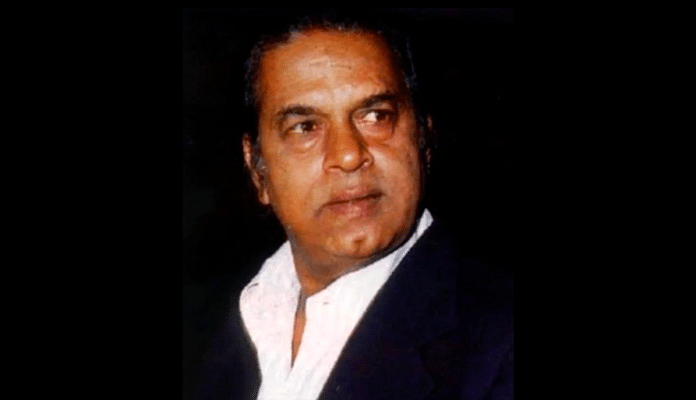New Delhi: One of his most famous movies featured an unhappily married man, driven to alcohol by an indifferent wife, who finds succour with an escort, herself forced into the profession by a series of unfortunate turns of life.
“Kuch toh log kahenge,” one of the two protagonists, Anand Babu, played memorably by Rajesh Khanna, tells Pushpa, brought to life by Sharmila Tagore, in the face of social ridicule. “Logo ka kaam hai kehna.”
This challenge to society’s hypocrisy remains one of Bollywood’s most popular and poignant melodies. It also stands testament to the legacy of a film-maker whose depiction of love was not bound by the social conventions of the time.
For Shakti Samanta, the legendary Bollywood director who churned out a host of timeless classics during the 1960s and 1970s, love was an emotion that transcended social boundaries.
Samanta, who was born 13 January 1926, was fondly referred to as Shakti da. A fan of Bengali literature, which he believed had a special way of striking a chord with readers, he made 37 Hindi and six Bengali films.
“The more I look at dad’s films, the more I am convinced that they are still fresh and haven’t outdated [sic] at all,” Shaktda’s son Ashim Samanta said in an interview to Rediff in June 2012.
Also read: Remembering Bimal Roy, the filmmaker who brought realism to Hindi cinema for good
Early life
Shaktida was born at Bokra village in Bardhaman district, West Bengal. He did his schooling in Dehradun and returned to Bengal for his higher studies, graduating from Calcutta University in 1944.
An aspiring actor from his childhood, Samanta then set off for Mumbai to pursue his dreams.
Before entering the film industry, he taught at a school in Dapoli, 200 kilometres from Mumbai.
His first stint in showbusiness came in 1948, when he was employed as an assistant director with Satish Nigam for the Raj Kapoor-starrer Sunehre Din.
“It was Ashok Kumar, then the top star at Bombay Talkies, who advised me to become an assistant director and not chase stardom,” he once said in an interview.
Soon, Samanta’s inclination shifted from acting to film-making, and he assisted several notable directors like Phani Majumdar and Gyan Mukherjee in the ensuing years.
His first break as a full-fledged director came in 1954, with the film Bahu.
Making of Shakti da’s bests
By 1958, Samanta had ventured into production with his company Shakti Films. His debut as a producer is the 1958 murder-mystery Howrah Bridge, whose unforgettable numbers still populate the playlists of music aficionados, namely, “Aaiye Meharban” and “Mera Naam Chin Chin Chu”.
Samanta always believed that a film could only be a success when a good story is in tune with great music.
One of his directorial classics was Aradhana (1969), another Rajesh Khanna-Sharmila Tagore hit that burnt charts with songs such as “Roop Tera Mastana” and “Mere Sapno Ki Rani”. The story itself was groundbreaking, detailing a single mother’s quest to give her child a sheltered childhood after the father dies before their marriage can be formalised.
The movie made stars of everyone associated with it: Along with Khanna and Tagore, the people behind the music, S.D. Burman and R.D. Burman, as well as Kishore Kumar with his hypnotic vocals.
His other hits include China Town, Kashmir Ki Kali, Sawan Ki Ghata, and An Evening In Paris.
The late Bollywood star Shammi Kapoor, a frequent collaborator of Samanta, described him as a “complete film-maker” who could be a very hard taskmaster.
Also read: Remembering Guru Dutt, the genius filmmaker
Other contributions
Samanta also established the Aradhana Sound Service, a digital audio post-production facility for Bollywood and Hollywood films.
He served in institutions like the Indian Motion Pictures Producers Association, with a stint as chairman of the Central Board of Film Certification (CBFC) from 1991 to 1998.
He breathed his last on 9 April 2009 in Mumbai.



